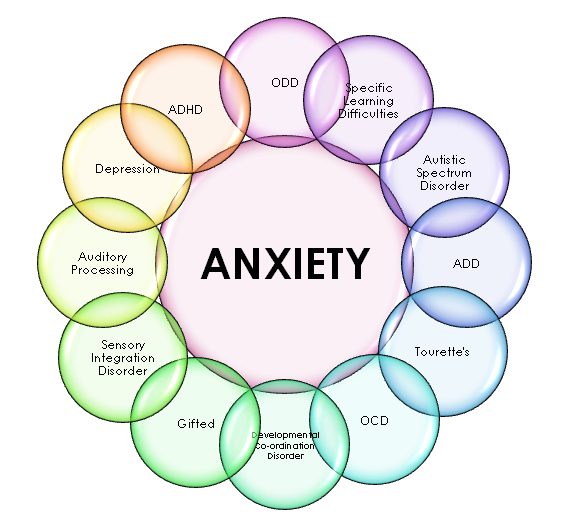Introduction
Anxiety is a ubiquitous aspect of the human experience, affecting individuals across cultures, ages, and socioeconomic backgrounds. While some level of anxiety is normal and even adaptive, serving as a protective mechanism in threatening situations, excessive or chronic anxiety can have debilitating effects on an individual's mental, emotional, and physical well-being. In this essay, we delve into the multifaceted nature of anxiety, exploring its underlying causes, manifestations, and the far-reaching consequences it can impose on individuals and society.
Understanding Anxiety: Causes and Mechanisms
Anxiety disorders arise from a complex interplay of genetic, environmental, and psychological factors. Genetic predispositions play a significant role, with studies indicating a heritable component to anxiety disorders. Variations in genes related to neurotransmitter regulation, such as those involved in the serotonin and dopamine systems, have been implicated in the development of anxiety disorders.
Environmental factors also contribute significantly to the development of anxiety. Early life experiences, including trauma, neglect, or inconsistent caregiving, can disrupt the development of healthy coping mechanisms and increase vulnerability to anxiety disorders later in life. Additionally, chronic stressors such as financial difficulties, relationship problems, or work-related pressures can exacerbate anxiety symptoms.
Psychological factors, such as maladaptive thought patterns and coping strategies, further contribute to the maintenance of anxiety disorders. Individuals prone to catastrophic thinking or excessive worry may find themselves trapped in a cycle of rumination and heightened anxiety responses. Avoidance behaviors, while providing temporary relief, only serve to reinforce the underlying anxiety and perpetuate the cycle of distress.
Manifestations of Anxiety: From Cognitive Distortions to Physical Symptoms
Anxiety disorders manifest in various forms, encompassing cognitive, emotional, and physical symptoms. At the cognitive level, individuals with anxiety disorders often experience distorted thinking patterns characterized by excessive worry, catastrophic thinking, and anticipation of negative outcomes. These cognitive distortions fuel feelings of apprehension and dread, leading to heightened emotional arousal.
Emotionally, anxiety disorders are characterized by a pervasive sense of unease, fear, or apprehension. Individuals may experience intense feelings of panic or terror, accompanied by a sense of impending doom. These emotional experiences can be overwhelming and interfere with daily functioning, impairing one's ability to concentrate, make decisions, or engage in social interactions.
Physically, anxiety disorders can manifest in a myriad of symptoms, ranging from mild discomfort to severe distress. Common physical symptoms include rapid heartbeat, sweating, trembling, shortness of breath, dizziness, and gastrointestinal disturbances. These somatic symptoms often mimic those of a medical emergency, further exacerbating the individual's distress and fueling the cycle of anxiety.
Consequences of Chronic Anxiety: Impact on Mental, Emotional, and Physical Health
The consequences of chronic anxiety extend far beyond mere discomfort, significantly impacting an individual's mental, emotional, and physical health. Persistent anxiety can lead to the development of comorbid mental health conditions, such as depression, substance abuse disorders, and eating disorders. The co-occurrence of these disorders further complicates treatment and exacerbates the individual's suffering.
Emotionally, chronic anxiety can erode one's sense of self-esteem and self-efficacy, leading to feelings of helplessness and despair. Prolonged exposure to stress hormones, such as cortisol, can dysregulate the hypothalamic-pituitary-adrenal (HPA) axis, contributing to mood disturbances and increasing vulnerability to depressive episodes. Moreover, the pervasive nature of anxiety can strain interpersonal relationships, leading to social withdrawal and isolation.
Physically, the physiological toll of chronic anxiety can be profound, contributing to the development of cardiovascular disorders, gastrointestinal problems, and immune dysfunction. The constant activation of the body's stress response system can predispose individuals to hypertension, coronary artery disease, and gastrointestinal disorders such as irritable bowel syndrome (IBS). Moreover, chronic inflammation resulting from prolonged stress can compromise immune function, increasing susceptibility to infections and autoimmune disorders.
Societal Implications of Anxiety: Economic Burden and Healthcare Costs
Beyond its individual impact, anxiety disorders impose a significant economic burden on society as a whole. The indirect costs associated with reduced productivity, absenteeism, and disability claims place a substantial strain on the economy. Moreover, the healthcare costs associated with the treatment of anxiety disorders, including medication, psychotherapy, and hospitalization, further compound the financial burden.
Furthermore, anxiety disorders contribute to significant healthcare utilization, with individuals frequently presenting to primary care physicians and emergency departments with somatic complaints related to anxiety. The high prevalence of anxiety disorders underscores the need for increased access to mental health services and early intervention programs aimed at reducing the incidence and severity of anxiety-related morbidity.
Conclusion
In conclusion, anxiety disorders represent a significant public health concern, affecting individuals across the lifespan and posing substantial challenges to both individuals and society. Understanding the underlying causes and manifestations of anxiety is crucial for developing effective prevention and intervention strategies aimed at alleviating the burden of anxiety-related morbidity. By addressing the complex interplay of genetic, environmental, and psychological factors contributing to anxiety disorders, we can empower individuals to overcome their fears, reclaim their lives, and foster a society that values mental health and well-being.





Comments